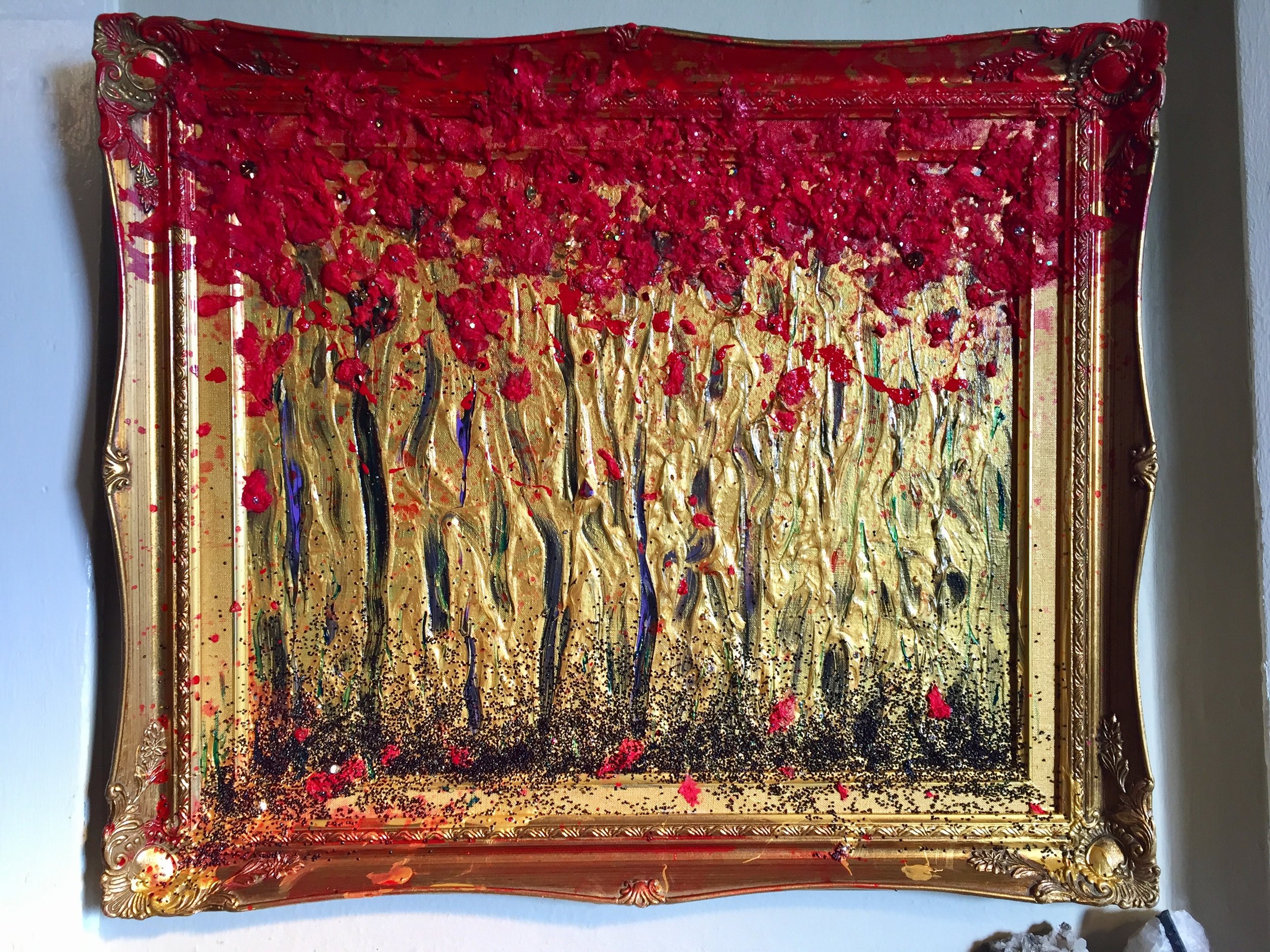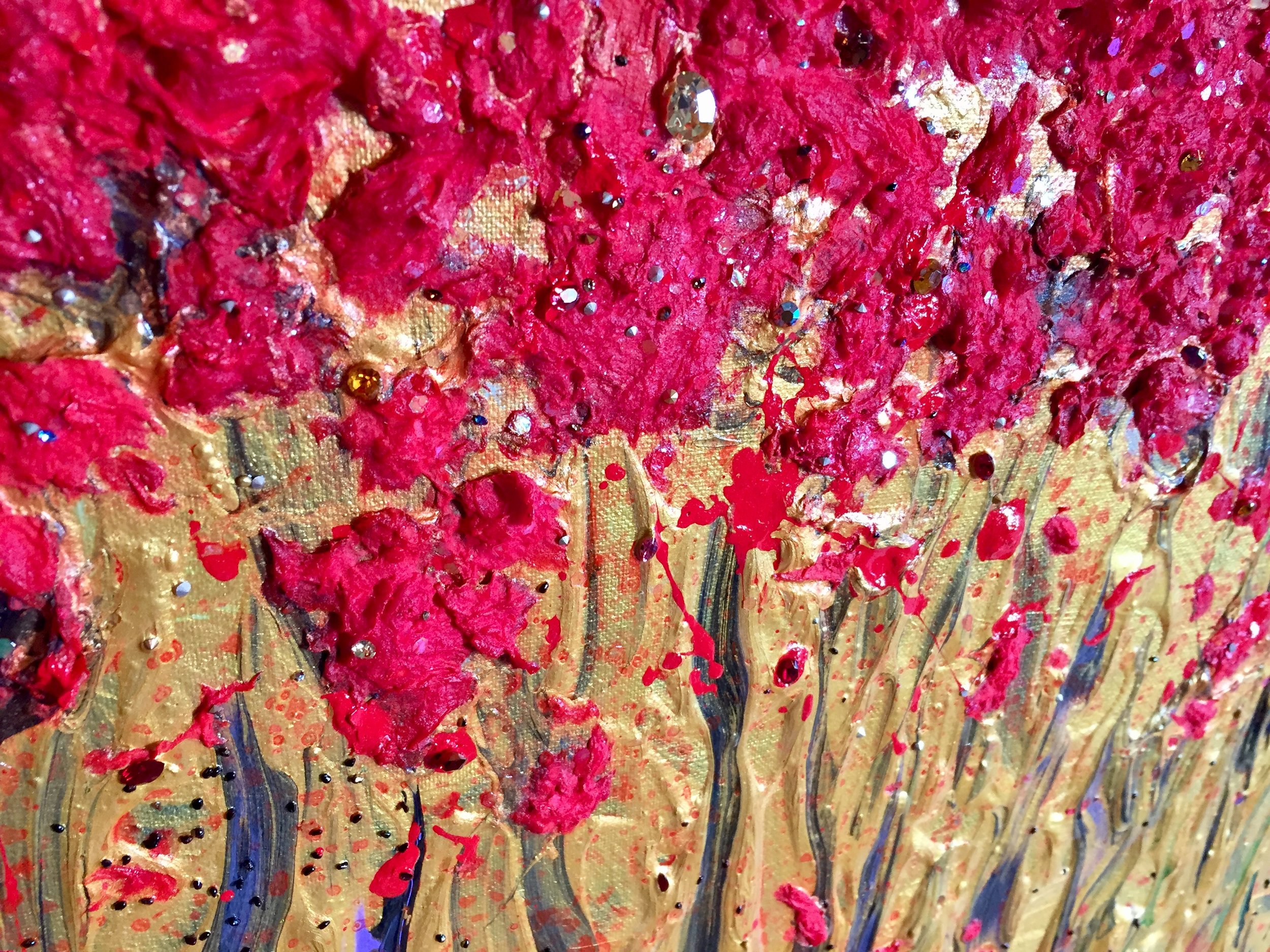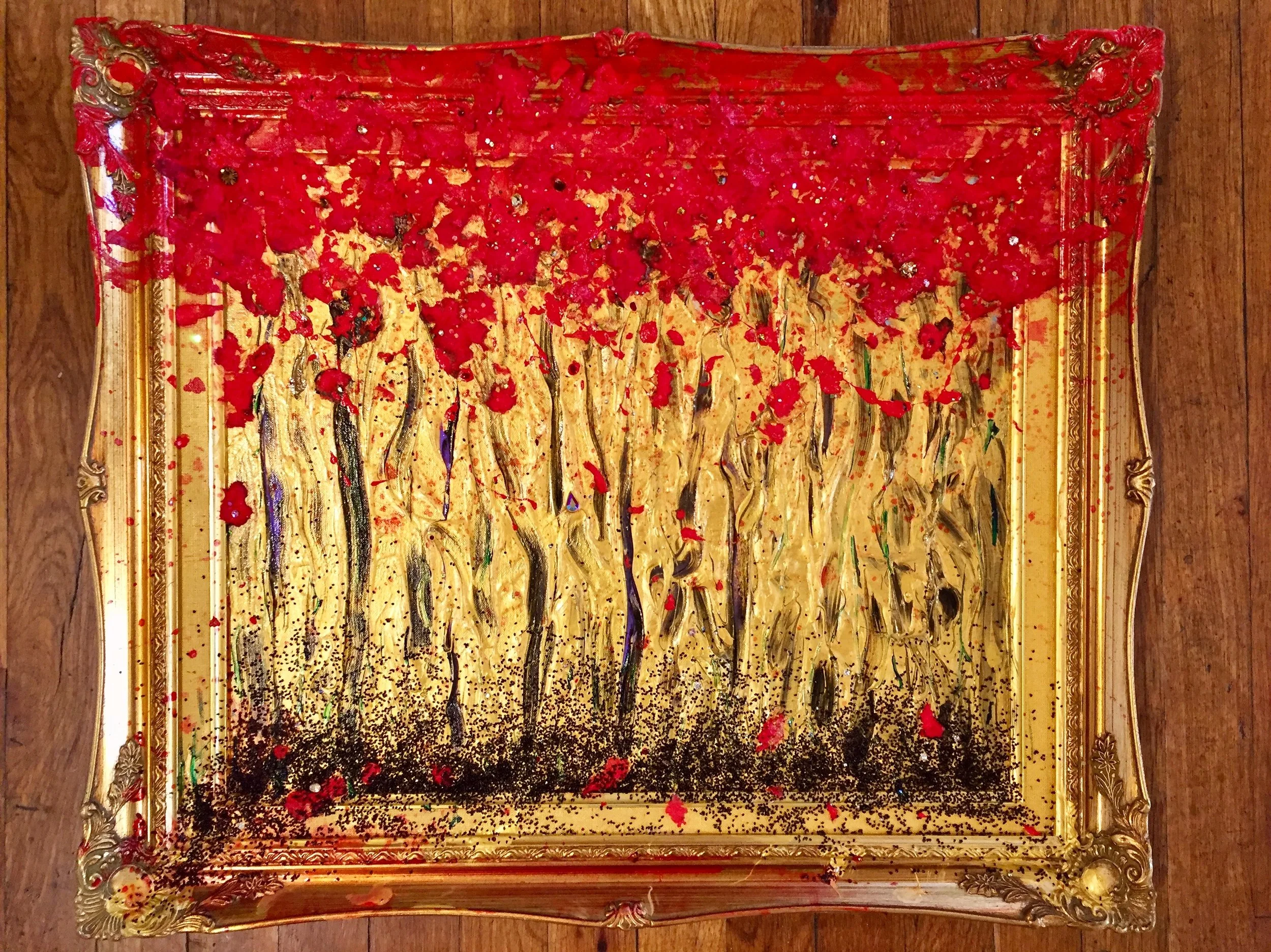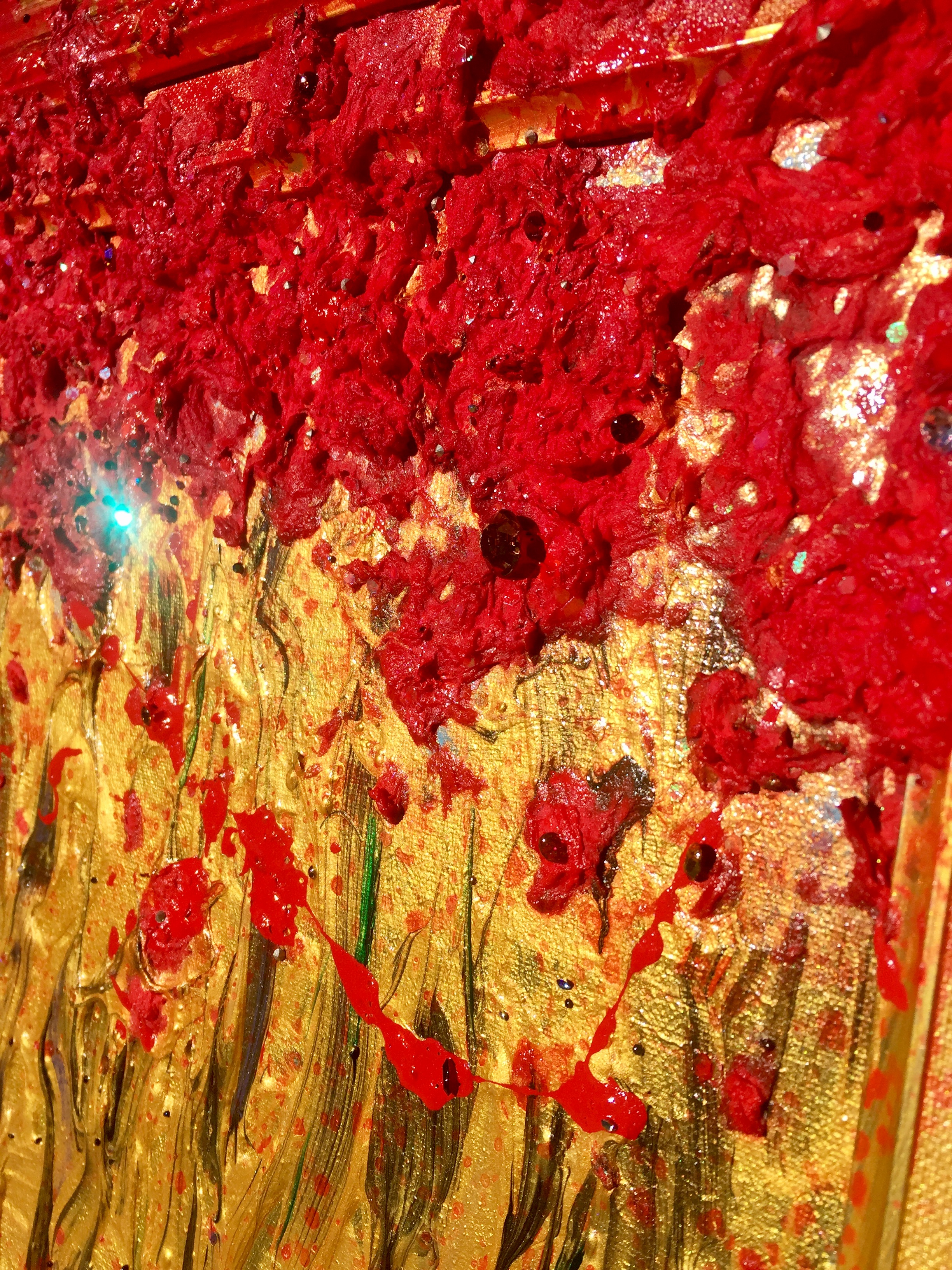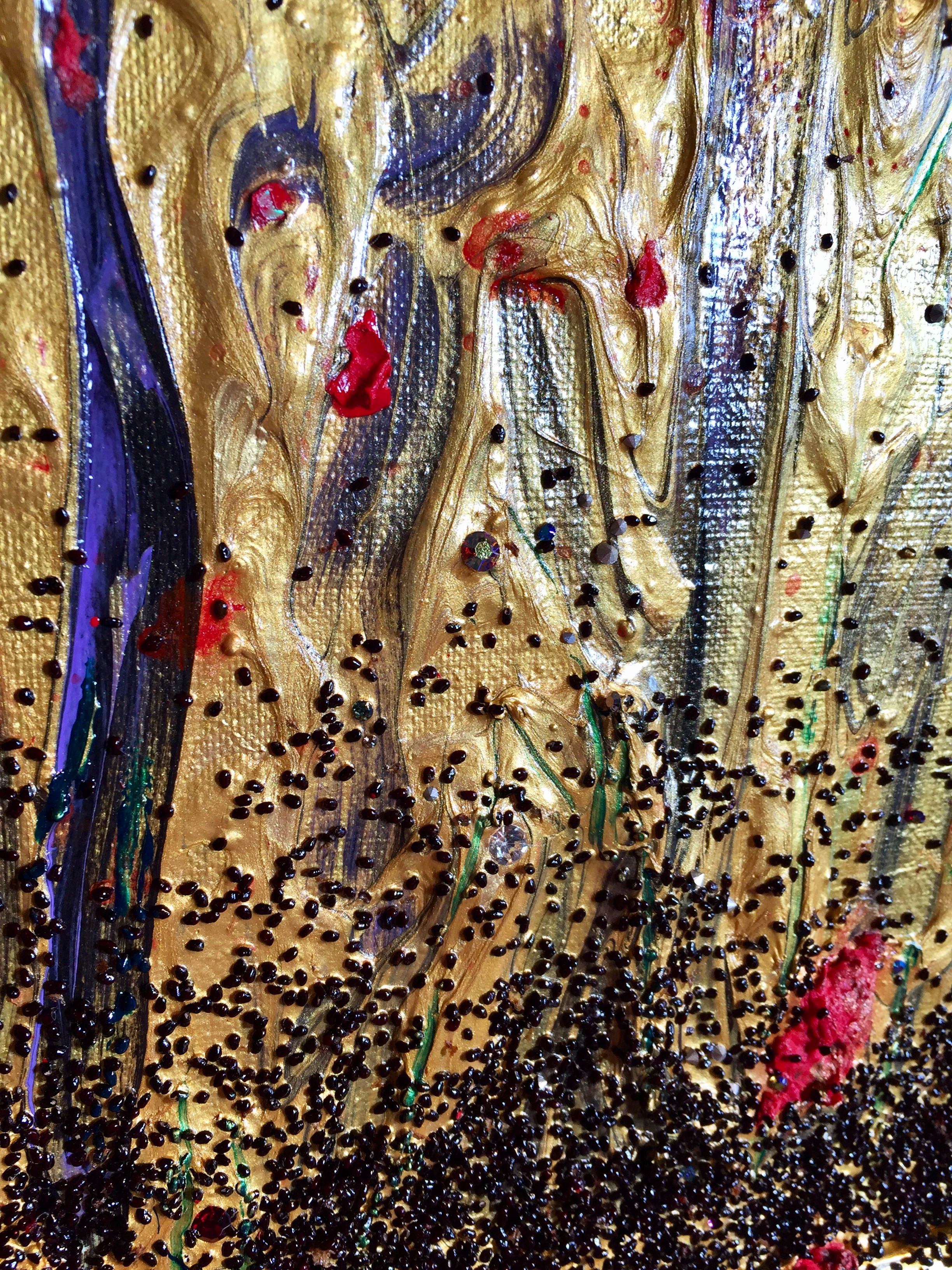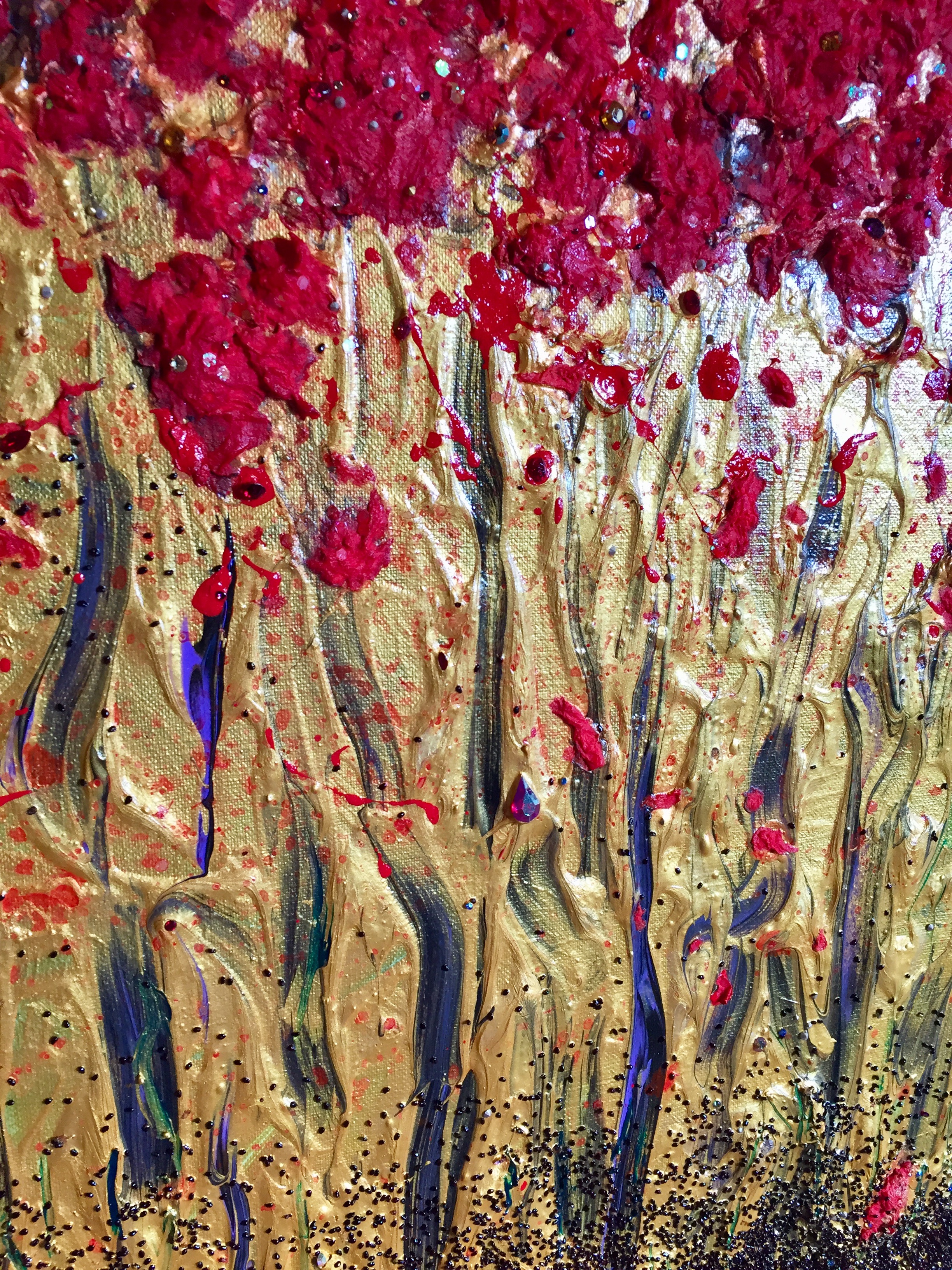Wild Red Leaves
Acrylics, ink, hand-made paper, vintage Swarovski crystals, saguaro seeds, saliva, and blood on a discarded canvas and frame.
My tea sensei has an old scroll with only the words, “Wild Red Leaves” written in what appears (to me at least) to be playful Chinese calligraphy. Despite the apparent playfulness of the script, my sensei, who is a Zen monk, interprets the piece as referring to something serene, somber, and maybe even lonely. Beautiful, yes, but full of decay and solitude.
To him it paints a picture of being on a high place overlooking forests where there is nothing but wild red leaves, or in a forest full of bare branches hanging above the ground carpeted in the dead red leaves of all the trees. It is a scroll he hangs as we move from furo, the season of spring and summer, into ro, the season of fall and winter. There is no new growth happening anywhere within sight.
Even so, this transition into autumn has become one of my favorite times of year and I have written a lot about it. As the land starts to head into decline and death, right there at that moment it becomes absolutely profligate with life. Autumn, after all the growing is over, after the fruit has dried out or rotted, is when nature starts sowing her seeds with the wildness I think that Zen scroll hints at. The leaves are not just dying in some mass holocaust, but are being shed in such a way that soil is made, seeds are buried, and the template for the coming riot of new life gets drawn. Death and life are intrinsically linked in the simultaneous loss and outrageous abundance nature gives us each autumn.
The saguaro seeds represent this in a literal sense, but the red leaves, made of paper soaked in a mixture of calligraphy inks, paints, varnish, glitter, mica, and a small amount of my blood and saliva, hold multiple meanings. Obviously, they speak to the titular leaves, but they are thrown on to the canvas violently, leaving stains and spatters everywhere. I threw the tiny clumps of crimson all over the piece with wild abandon, just like the seeds and spores that feed and overwhelm every hungry thing in the forest. I also used hundreds of tiny seed crystals. The larger crystals were placed with precision as a counterpoint to the randomness of the piece, but the smaller seed crystals were just scattered with abandon, like seeds and spores are in the wild. Some glimmer with brilliant color, but many are buried in the paint or their matte backsides are toward the viewer. This speaks to the fact that nature has to be abundant enough that there will be more than enough sown to perpetuate itself even in the face of winter, drought, and all the things that could consume or harm the life held in each tiny kernel, grain, or spore.
There is no denying that part of autumn is loss, death, and barrenness, and in the autumns of our lives and societies this often manifests as violence or shocking grief. There is damage. It hurts. And so the leaves look fleshy, wounded and wounding, even in their beauty. Again, it is both beautiful and lonely, lush and full of loss.
I had been meditating on this scroll for a year, having kept a photo of it for reference. A week before painting this piece my tea sensei hung the scroll again in Kansen An, his tea house, as we prepared to put away the furo and open up the ro. I wanted to see if I could find reference to the phrase and could not, but I did find a Carl Sandburg poem I had never read before:
Under the Harvest Moon
By Carl Sandburg.
Under the harvest moon,
When the soft silver
Drips shimmering
Over the garden nights,
Death, the gray mocker,
Comes and whispers to you
As a beautiful friend
Who remembers.
Under the summer roses
When the flagrant crimson
Lurks in the dusk
Of the wild red leaves,
Love, with little hands,
Comes and touches you
With a thousand memories,
And asks you
Beautiful, unanswerable questions.
This, to me, captures all the glory and all the pathos of the “wild red leaves.”
